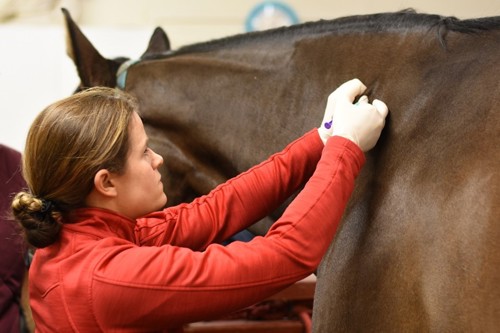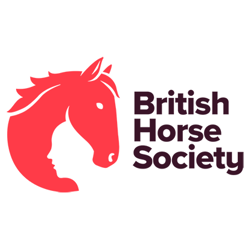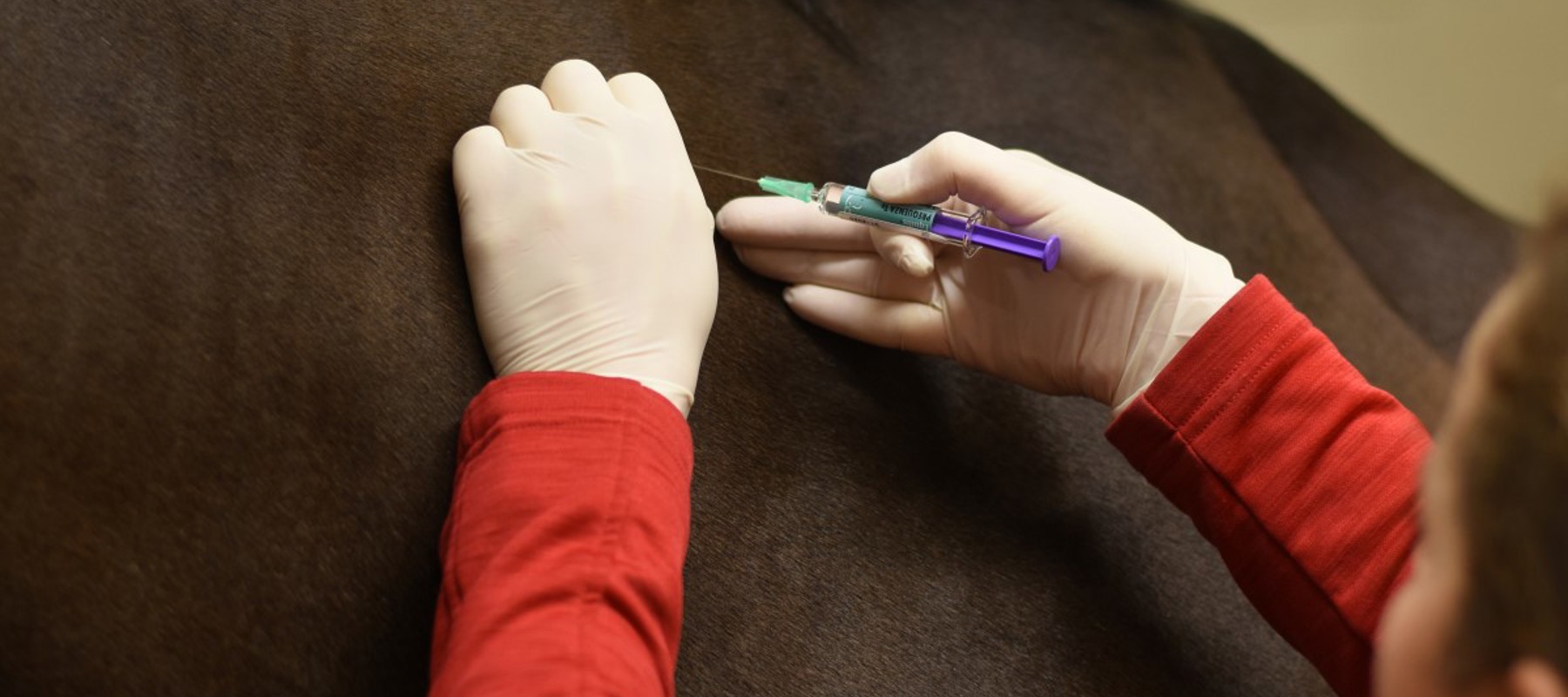Tetanus is a non-contagious disease caused by the bacterium Clostridium tetani, which is commonly found in soil. Infection usually happens when the bacteria enter the bloodstream through a wound, such as foot abscesses or deep puncture wounds which are especially vulnerable. Once inside, this produces a powerful toxin that affects the horse’s nervous system.
This bacterium can live harmlessly in a healthy horse’s gut. However, it can still be shed in droppings which contaminates the environment. If a horse with a damaged gut eats contaminated soil or faeces, they may become infected.
Horses are particularly at risk compared to other domestic animals, due to their environment and their tendency to pick up injuries. Newborn foals are also vulnerable to this bacterium if it enters through the navel.
Did you know?
Once symptoms appear, around 73% of horses sadly don’t survive1. Tetanus is often fatal – but it’s completely preventable. Vaccination is by far the easiest and most effective way to protect your horse.
Clinical signs
- Signs usually appear 7-21 days after exposure to the bacteria
- Your horse may seem unusually sensitive or jumpy, reacting strongly to touch or movement
- Muscle spasms may develop, making your horse reluctant to move
- A tell-tale sign is the third eyelid flicking across the eye (called a protrusion), especially when startled
- The tail held stiffly out
- As the condition worsens, spasms in the jaw and neck can make it difficult or impossible for your horse to eat, drink or swallow, often described as ‘lockjaw’
- In the final stages, severe spasms and seizures can cause collapse, followed by death due to respiratory or heart failure.
Treatment
Early treatment is essential, so make sure to call your vet immediately for the best chance of recovery. The treatment focuses on stopping the bacteria and preventing further toxin production. This usually involves sedatives, antibiotics and large doses of tetanus antitoxin.
Intensive nursing care is vital. If your horse can still eat, place food at a comfortable height to encourage them. In advanced cases, where recovery is unlikely, your vet may recommend euthanasia to prevent further suffering.
Prevention

A typical vaccination programme includes two initial injections 28 to 42 days apart, followed by a booster 12 months later. After that, boosters are usually given every two years, but always check with your vet, as vaccine schedules can vary. Pregnant mares who are already vaccinated should receive a booster 28 to 42 days before foaling. This helps protect the foal for the first 42 to 84 days of life. Foals can start their own vaccination course from around three to four months old.
Good hygiene and daily checks are key. Inspect your horse regularly for injuries.

What to do if your horse has a wound
chevron-down
chevron-up
• Check your horse’s vaccination status, if they’re not up to date, call your vet.
• If your horse steps on a nail or other sharp object, don’t remove it. Let your vet assess the injury first to avoid causing more harm.
• If you’re ever unsure about a wound or your horse’s tetanus vaccination, it’s always best to contact your vet for advice and support.
References
chevron-down
chevron-up
1. Ribeiro, M. G. et al (2018). Tetanus in horses: an overview of 70 cases. Pesq. Vet. Bras, 38(2), 285-293.


